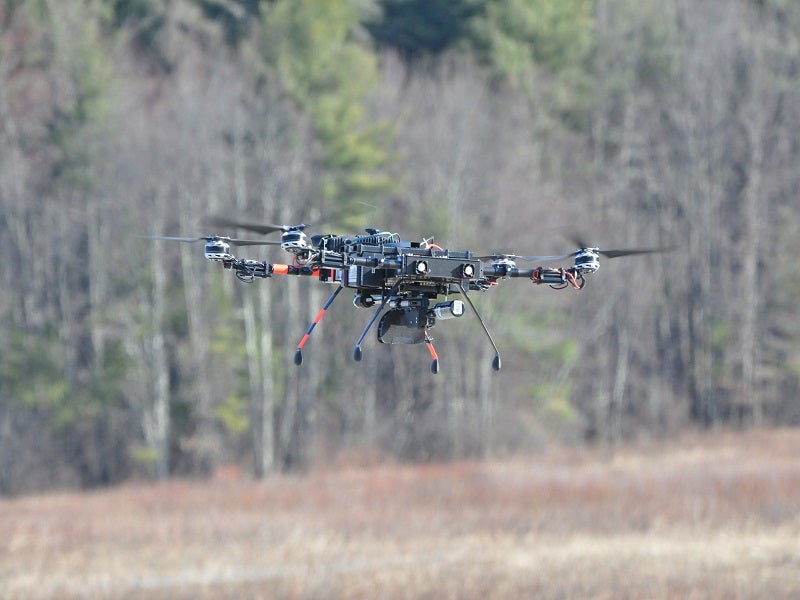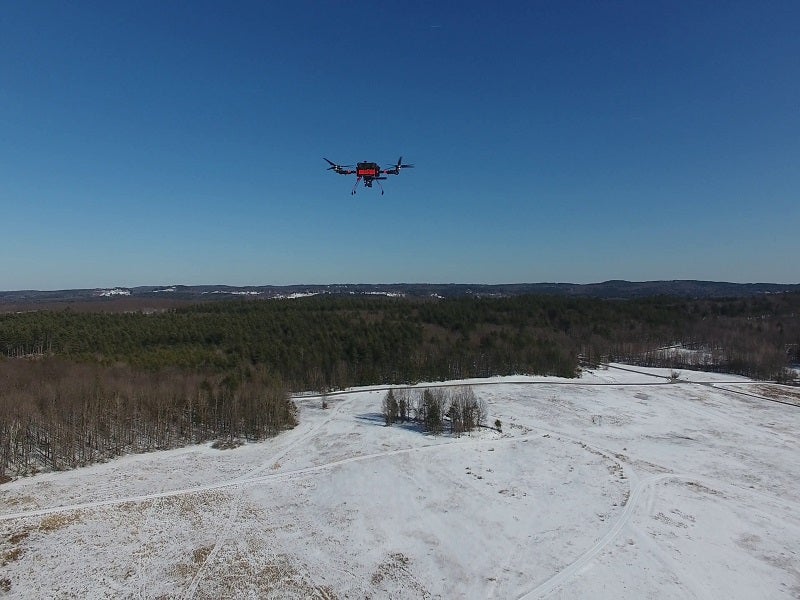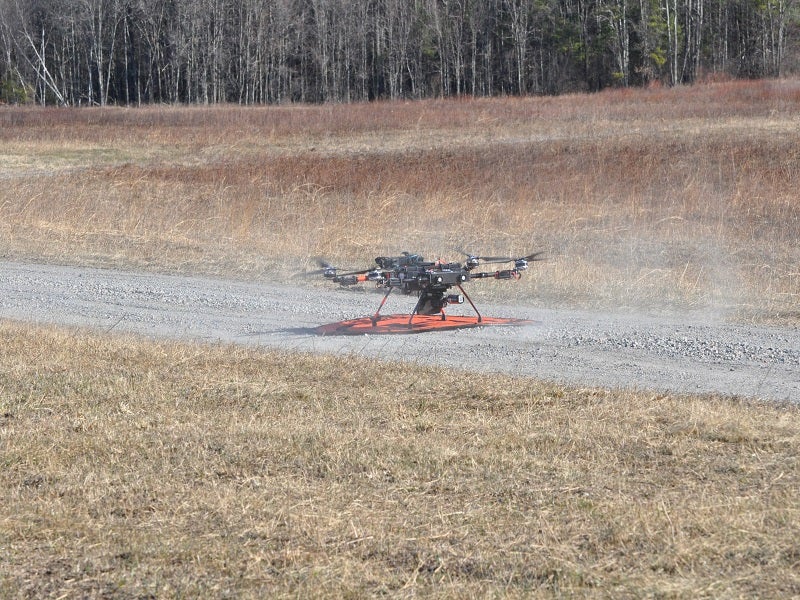Modular Intercept Drone Avionics Set (MIDAS) is a highly flexible, autonomous counter-unmanned aircraft system (C-UAS) developed by Aurora Flight Sciences (Aurora), a subsidiary of Boeing.
Manufactured in the US, MIDAS can counter the threat of hostile small UAS (sUAS) with minimum collateral effects.
It was originally developed under a contract received from the Defense Innovation Unit (DIU), an organisation of the US Department of Defense (DoD).
MIDAS C-UAS design and features
The MIDAS C-UAS is an artificial intelligence (AI)-enabled, multi-rotor sUAS designed to operate autonomously from launch to landing.
It features an open architecture and quick-change modular rails that support customisable payloads based on mission needs and allow for alternate use-cases.
The unmanned platform has a length of 55in (1.39m), a height of 16in (0.4m), and a width of 48in (1.2m). It can carry up to 9kg payload and achieve a maximum speed of more than 70mph (112.65km/h).
MIDAS provides precision capabilities and can defeat up to 16 small unmanned aircraft systems per flight.
The rotor configuration enables the system to aim at the target independent of the flight direction.
It can fire rounds to defeat adversary drones without endangering people located beyond the radius of 8m of the target.
Onboard sensors and software
The counter-drone solution is equipped with optical sensors to guide it towards the target. It is cued by a ground-based radar and locks on the target using the onboard sensor. The sensor suite enables the C-UAS to autonomously identify and track targets.
Upon successful target identification, the DED fires bolo projectiles to disrupt the drone by entangling its propellers.
The C-UAS leverages perception and guidance, navigation, and control (GNC) algorithms to search for, track, and target unmanned aerial vehicles.
It uses the target’s localised, real-time position provided by the algorithms and then prepares an autonomous intercept and firing solution.
The algorithms provide information about the target. MIDAS receives the information and provides control commands directly to the autopilot system. The DED is then activated to fire bolo projectiles and down the drone.
Propulsion and performance
MIDAS is a battery-powered electric vertical take-off and landing (eVTOL) quadcopter. It is powered by four propellers. The flight endurance of the C-UAS is 20 minutes, while the maximum combat radius is 8km.
Testing and demonstration details
Aurora completed a programme to upgrade the software and hardware systems of MIDAS and tested the upgraded system in April 2022.
The upgrade included improvements to the drone engagement device (DED) and autonomous capabilities, as well as to the unmanned system’s speed and manoeuvrability. The enhancements improved the target acquisition capabilities and the effectiveness of the system in disabling the target drone.
The upgraded C-UAS autonomously defeated 83% of sUAS targets during the testing.
Aurora also showcased the MIDAS counter-drone technology during a demonstration conducted by the Joint Counter-sUAS Office (JCO) and the Army Rapid Capabilities and Critical Technologies Office (RCCTO), in partnership with the Air Force, at the Yuma Proving Ground in Arizona, US, in April 2021.
The company was one of the three companies selected through a request for information (RFI) released in January 2021 to demonstrate counter-sUAS capabilities with a low collateral damage. The other two companies, ELTA North America and XTEND demonstrated their Drone-Kill-Drone (DKD) and Skylord Griffon systems, respectively.
MIDAS was tested to assess its ability to integrate with existing DoD systems, autonomous capabilities, and effectiveness in mitigating lightweight UAS of Group 1 category.






